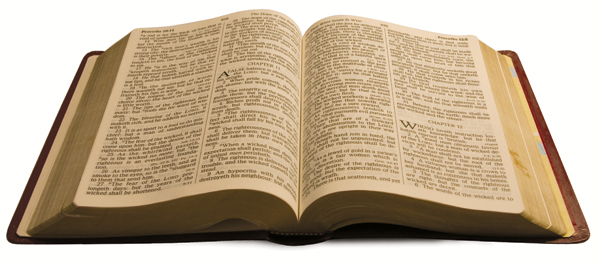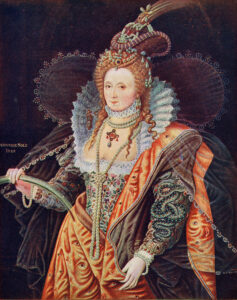
a Jacobean committee of scholars created the single greatest, most influential work of English prose ever written
By Siân Ellis
Many moons ago, in the summer before I went up to Oxford to study modern languages, my tutors sent me a reading list. Alongside the expected tomes in German and French, I found: King James Bible (King James underlined). Why so prescriptive, methought; it was a time when trendy new versions were all the rage, after all: how about those for a handy reference? What a clunking dullard.
This year marks the 400th anniversary of the publication of the King James Bible, aka the James I Authorized Version or the King James Version (KJV). And while you won’t find one specific birthplace with a venerable monument to such a major historic undertaking, you can certainly add its genesis to your list of reasons to visit Oxford and Cambridge.
For here, amid the dreaming spires, a Jacobean committee of scholars created the single greatest, most influential work of English prose ever written: a translation that is a literary achievement in its own right. Okay, a third of the work was farmed out to folk in Westminster, but many of them had links to Oxbridge and, unless you inveigle your way into the Abbey’s Jerusalem Chamber (not open to the public) where they met, there’s not much else to look up there.
Trip along to the university cities, with greater insight into their palimpsests of history and culture than I showed when I first arrived, and the KJV story is all around: part of the golden-stone fabric, the aura, the heady year-upon-year ferment of ideas that has so often shaped the world beyond the college doors. Catch fleet shadows of the academics, the movers and shakers who hurried to their Bible sessions at Merton or Corpus Christi colleges in Oxford. Christ Church, Lincoln, Magdalen; Cambridge’s Emmanuel, Sidney Sussex, Trinity—these and many more were all touched by the committeemen’s web.
I did take my tutors’ hint and discovered the KJV’s resonant, majesty- and mystery-evoking language. Away with flat, thin-of-meaning modern stuff. Here is something far richer, whose archaic poeticism yet lives, moves and fires heart, mind and soul. It’s surprising, too, how many phrases from the KJV even now populate the day-to-day English language: “the skin of my teeth,” “how are the mighty fallen,” “rise and shine,” “sour grapes.” The reach of its music and rhetoric went well beyond the pulpit and right around the English-speaking world, beyond England’s historical contribution to the Renaissance and right down to the present day.
So how did the KJV come about? Even into the Middle Ages, the Holy Scriptures transmitted in the Bible remained something of a closed book to the common English man: Hebrew, Greek, Aramaic, Latin Vulgate translation were simply incomprehensible without a priestly class to interpret and impart their messages. Bits of the Bible had been translated into Anglo-Saxon as early as the 7th century, but otherwise mere monoglot mortals were left in the dark.
Indeed, whether or not God’s Holy Word should be made accessible to the natives in their vernacular at all became a dangerous topic. Surely, it was averred, the grubby language of the laborer was unfit to convey such precious pearls. Church and political rulers maybe also had a concern to keep the plebs in their place: what on earth might someone think if they could read or hear—unmediated —ticklish questions like Acts 4:19, “Peter and John answered and said unto them, Whether it be right in the sight of God to hearken unto [religious leaders] more than unto God, judge ye.” Better to protect the hierarchy, otherwise revolution could ensue.
Some courageous souls nevertheless determined to translate the Bible into English. John Wycliffe, one-time Master of Balliol College, Oxford, and inspiration behind the “heretical” Lollards, produced his translation in the 1380s. Even in death he was persecuted, his body exhumed from its grave at Lutterworth (Leicestershire) and burned.
William Tyndale’s English language Bible began to appear from 1525 amid the upheaval of the Reformation. Printed on the Continent, it was smuggled into England between bales of cloth and became widely popular. Tyndale, who had been educated at Oxford’s Magdalen College, was eventually betrayed by an English spy, strangled and burned for his troubles in 1536.
It was a deadly business to be a translator, but precedents were being set. The English language was being enriched, too: Wycliffe’s “flesh and blood” and “the twinkling of an eye,” and Tyndale’s “my brother’s keeper,” “the powers that be” and “pearls before swine,” were catching hold.
By the time Henry VIII was stirring trouble with Rome, the moment for an English Bible was becoming politically ripe. Miles Coverdale, a former assistant to Tyndale, dedicated his translation to the King, and in 1537 another of Tyndale’s friends on the Continent, John Rogers, published the so-called Matthew’s Bible under the pseudonym of Thomas Matthew. Henry licensed 1,500 copies, and it became the first Bible in English to be sold legally in England. Indeed, Bluff King Hal now began to get in on the act, ordering that a Bible be placed in every church in England—cue another revision, the 1539 Great Bible.
[continued on next page]



